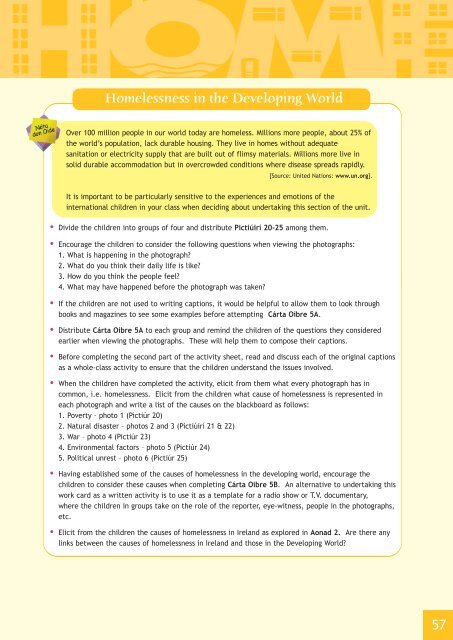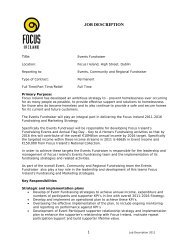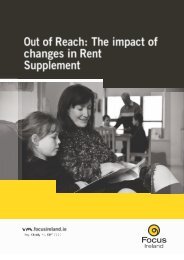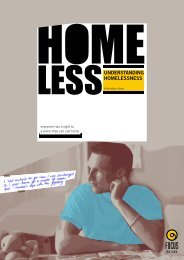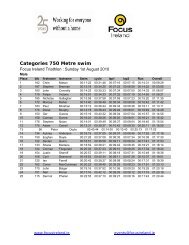Download No Place Like Home resource here - Focus Ireland
Download No Place Like Home resource here - Focus Ireland
Download No Place Like Home resource here - Focus Ireland
- No tags were found...
You also want an ePaper? Increase the reach of your titles
YUMPU automatically turns print PDFs into web optimized ePapers that Google loves.
<strong>Home</strong>lessness in the Developing WorldOver 100 million people in our world today are homeless. Millions more people, about 25% ofthe world’s population, lack durable housing. They live in homes without adequatesanitation or electricity supply that are built out of flimsy materials. Millions more live insolid durable accommodation but in overcrowded conditions w<strong>here</strong> disease spreads rapidly.[Source: United Nations: www.un.org].It is important to be particularly sensitive to the experiences and emotions of theinternational children in your class when deciding about undertaking this section of the unit.• Divide the children into groups of four and distribute Pictiúirí 20-25 among them.• Encourage the children to consider the following questions when viewing the photographs:1. What is happening in the photograph?2. What do you think their daily life is like?3. How do you think the people feel?4. What may have happened before the photograph was taken?• If the children are not used to writing captions, it would be helpful to allow them to look throughbooks and magazines to see some examples before attempting Cárta Oibre 5A.• Distribute Cárta Oibre 5A to each group and remind the children of the questions they consideredearlier when viewing the photographs. These will help them to compose their captions.• Before completing the second part of the activity sheet, read and discuss each of the original captionsas a whole-class activity to ensure that the children understand the issues involved.• When the children have completed the activity, elicit from them what every photograph has incommon, i.e. homelessness. Elicit from the children what cause of homelessness is represented ineach photograph and write a list of the causes on the blackboard as follows:1. Poverty – photo 1 (Pictiúr 20)2. Natural disaster – photos 2 and 3 (Pictiúirí 21 & 22)3. War – photo 4 (Pictiúr 23)4. Environmental factors – photo 5 (Pictiúr 24)5. Political unrest – photo 6 (Pictiúr 25)• Having established some of the causes of homelessness in the developing world, encourage thechildren to consider these causes when completing Cárta Oibre 5B. An alternative to undertaking thiswork card as a written activity is to use it as a template for a radio show or T.V. documentary,w<strong>here</strong> the children in groups take on the role of the reporter, eye-witness, people in the photographs,etc.• Elicit from the children the causes of homelessness in <strong>Ireland</strong> as explored in Aonad 2. Are t<strong>here</strong> anylinks between the causes of homelessness in <strong>Ireland</strong> and those in the Developing World?57


